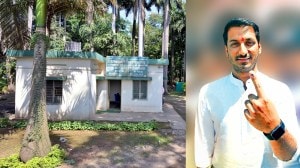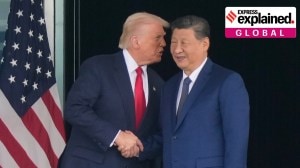Guarded Taliban
The autobiography of a Taliban insider should have been insightful but it doesnt even provide half-answers....
My Life With the Taliban
Abdul Salam Zaeef
Edited and translated by Felix Kuehn and Alex Strick van Linschoten
Hachette India
Pages: 382
Rs 495
As you assess the thickening pile of books under the Al Qaeda or Taliban tag,the Taliban insider Abdul Salam Zaeefs hardback should be somewhere close to the top of the pile. Sadly,it isnt. Zaeef had served as an ambassador of the Taliban to Pakistan and an autobiography offers a tremendous possibility of serving as a basic guide to an understanding of a Taliban warrior all the way from a village in southern Afghanistan to fighting the Soviets,getting posted in Islamabad,fighting the Americans and being in Guantanamo Bay.
However,it is in the role of a diplomat that Zaeef revels most in. His entire account from the very start to his meanderings as a Taliban soldier in a key position in Pakistan should have offered valuable nuggets,experiences and some truths about the ISI,the Taliban and the regime in Afghanistan. But Zaeef is more than cautious. There is not much detail and only the absolute basics are penned.
Of course,the West is a huge market for such books,anxious as it is to understand the root cause of the Taliban and to get a close-up view of the system and culture in Kandahar or Herat or wherever. The temptation to tailor a book to suit those needs is very much here,but it would have been a far more enriching read if the writer had at least avoided some obvious gaffes,such as calling the alphabet primer used by the four-year-old Zaeef the Al Qaeda textbook the fact is that the Arabic/Urdu primer is referred to as the Qaeda,but to simply throw in the reference to an alphabet primer as the Al Qaeda textbook seems a mistake at best and deliberate mischief at worst.
As the narrative progresses through villages,the makes of guns,the expectations from the then Afghan president Najibullah and the rage against the Americans,the story is racy and full of exotic references,but it doesnt do much to add to the Al Qaeda story. Zaeef emphasises nothing much and is careful not to reveal anything about the network or the ruthlessness with which it operates. The stress is on the emotional element,on the attachment of people like Zaeef and how they tumble into the Taliban and stay their course all the way till the Guantanamo stint.
In the beginning of the book,the editors hope that Zaeef emerges as a tool to comprehend the times he has lived through,but he is overplayed as a funky symbol in much the same way several things in the heady 1968 the year of Zaeefs birth are. They write,All over the world,1968 was a year of change,a year of revolution. It was the year of the Tet offensive and of the My Lai massacre. Martin Luther King Jr was shot dead in Tennessee and in May the French took to the streets . It was the year of Czechoslovakia and the Prague Spring,the year John Steinbeck and Thomas Merton dies; it was the year of Simon and Garfunkels Mrs Robinson. This is the world into which Mullah Zaeef was born.
Zaeefs account is current,up till June 2009 and including US commander in Afghanistan General Stanley McChrystal and the US presidents assessments of the place and time.
The despair,as Zaeef reflects on the biggest mistake made by the Americans and on the profound lack of understanding of the enemy,strikes one as probing,but he does not even provide half-answers.



- 01
- 02
- 03
- 04
- 05




























